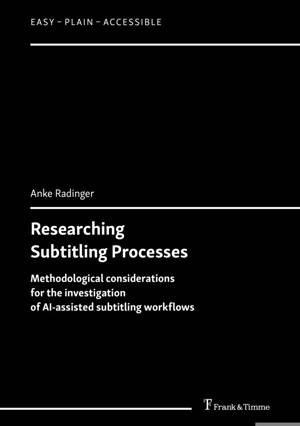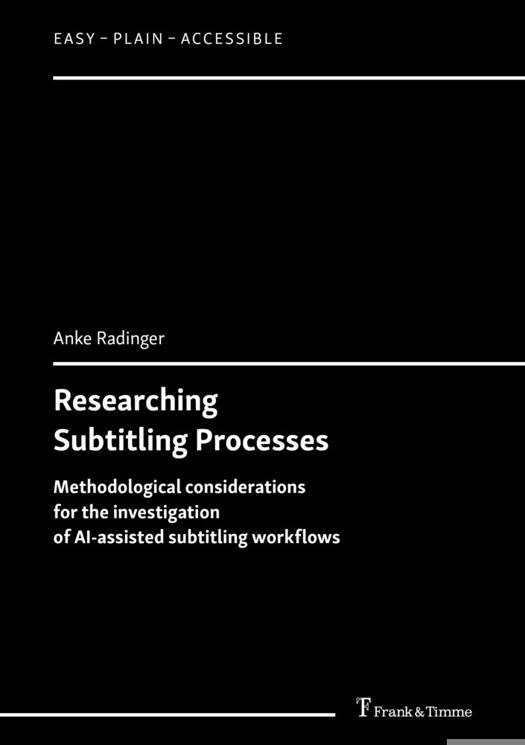
- Afhalen na 1 uur in een winkel met voorraad
- Gratis thuislevering in België vanaf € 30
- Ruim aanbod met 7 miljoen producten
- Afhalen na 1 uur in een winkel met voorraad
- Gratis thuislevering in België vanaf € 30
- Ruim aanbod met 7 miljoen producten
Zoeken
Researching Subtitling Processes
Methodological considerations for the investigation of AI-assisted subtitling workflows
Anke Radinger
€ 79,95
+ 159 punten
Omschrijving
Subtitling is almost as old as the motion picture itself. It is a very specific form of translation that goes well beyond the transferring of written texts - given that the source text (the film) is a complex combination of spoken and written text, together with dynamic images, music and sounds. But how does one "read" a film in order to translate it?In this volume, Anke Radinger investigates what happens in a subtitlers' mind, especially in various working environments. An example of one of these conditions is the introduction of innovative assistive language tools such as AI-powered speech-to-text into traditional subtitling workflows. Using methods like eye tracking and keylogging, Radinger reviews computer (or rather AI-) assisted subtitling processes, practices, and workflows, while concentrating on aspects such as effort and quality. Her work is a valuable contribution to subtitling process research (SPR), a young and greatly under-researched subfield of audiovisual translation.
Specificaties
Betrokkenen
- Auteur(s):
- Uitgeverij:
Inhoud
- Aantal bladzijden:
- 506
- Taal:
- Engels
- Reeks:
- Reeksnummer:
- nr. 18
Eigenschappen
- Productcode (EAN):
- 9783732910298
- Uitvoering:
- Paperback
- Afmetingen:
- 148 mm x 30 mm
- Gewicht:
- 727 g

Alleen bij Standaard Boekhandel
+ 159 punten op je klantenkaart van Standaard Boekhandel
Beoordelingen
We publiceren alleen reviews die voldoen aan de voorwaarden voor reviews. Bekijk onze voorwaarden voor reviews.








